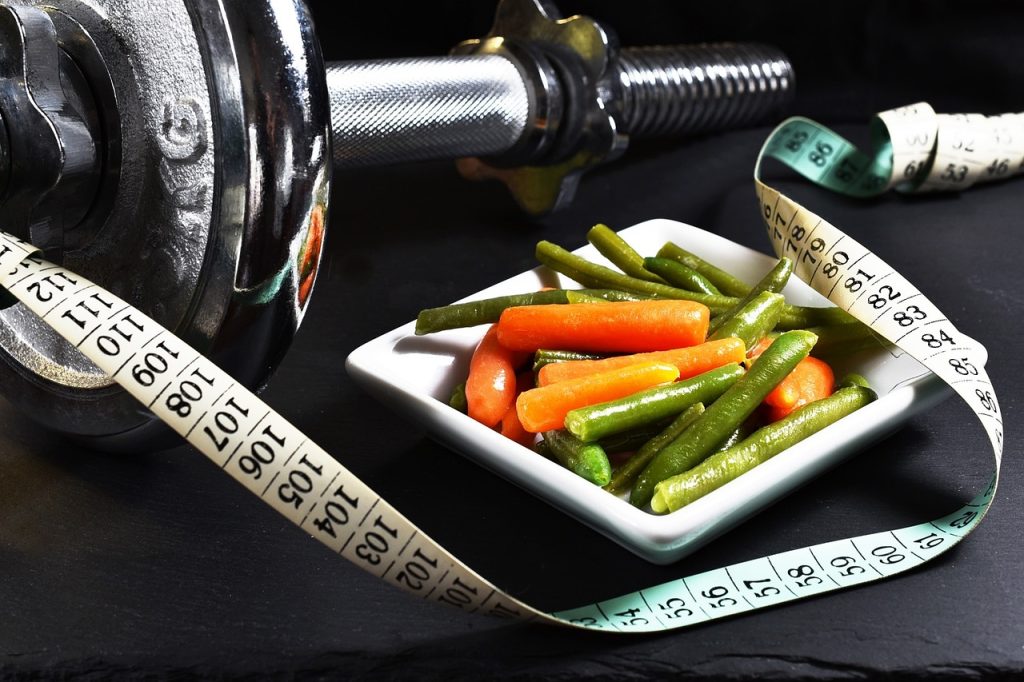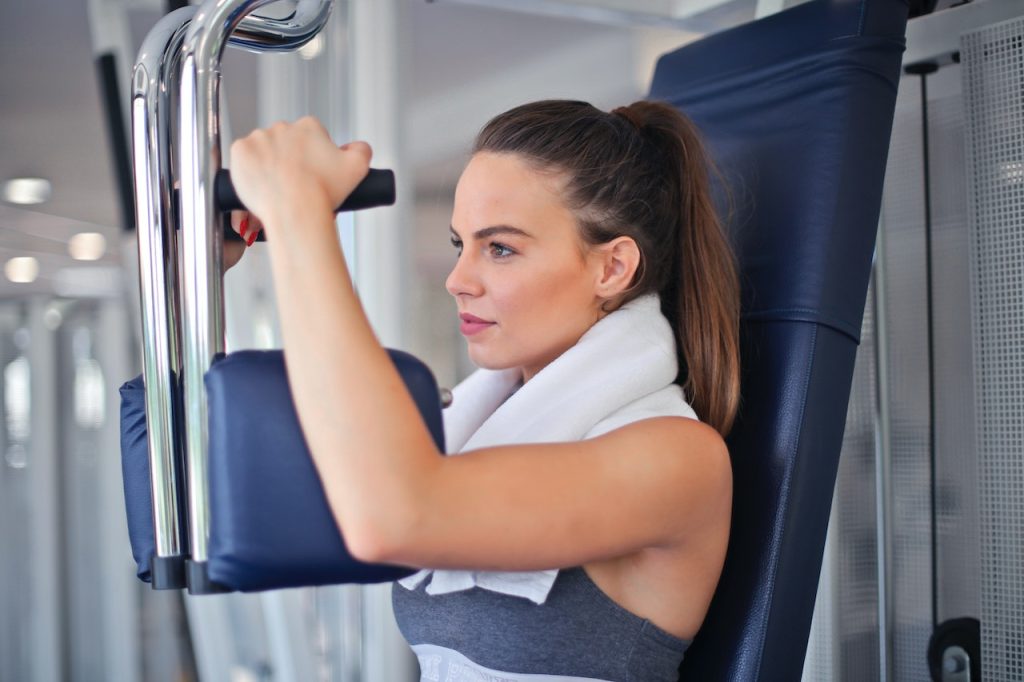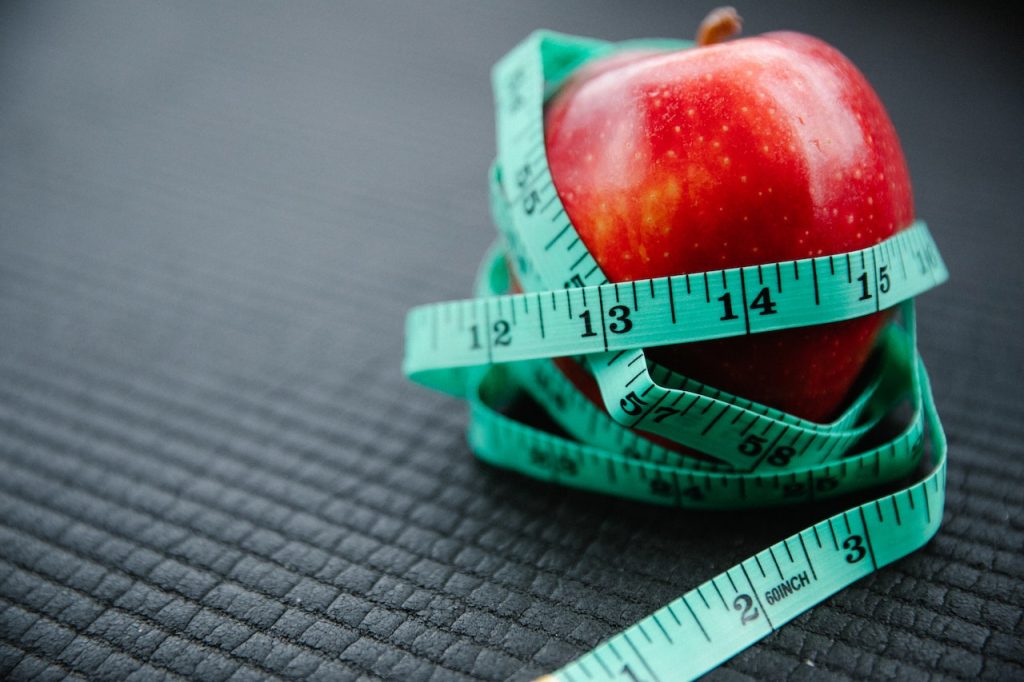Have you ever gazed into the mirror, taking a mental note of your goals and then wondered, “How on Earth can I shed those pounds quickly?” If this sounds like your internal monologue, you’re not alone. Weight loss, especially quick weight loss, is a topic that’s been on everyone’s lips (pun intended!) for years.
Understanding the Weight Loss Equation
Ah, the good ol’ weight loss equation: “Calories in versus calories out.” At first glance, it sounds like a basic arithmetic problem, doesn’t it? Eat less, move more, and voilà! Pounds drop. But let’s be honest, if it were that straightforward, wouldn’t we all be strutting around with our dream physiques? Let’s shed some light on this equation that’s as layered as an onion.
The Science Behind the Numbers
- Basal Metabolic Rate (BMR): This is the energy your body requires at rest. Imagine you’re lying in bed all day (sounds tempting, right?). The calories you’d burn in this state contribute to your BMR. Factors like age, gender, weight, and muscle mass influence this rate.
- Total Daily Energy Expenditure (TDEE): This is where things get a tad complex. TDEE is the total number of calories you burn in a day, including your BMR and the energy expended during physical activities. Whether you’re jogging, thinking, or even digesting your latest meal, it all counts!
More Than Just Calories
While calories play a starring role in the weight loss drama, not all calories are created equal.
- Nutrient Density: Would 100 calories of soda affect your body the same way as 100 calories of broccoli? Nope! One offers empty calories, while the other brings a host of nutrients to the party. So, it’s essential to focus on nutrient-dense foods that give you more bang for your calorie buck.
- Macronutrient Balance: Carbs, proteins, fats. Our bodies need them all, but in the right proportions. Each has its unique role and energy contribution:
- Carbs: 4 calories per gram
- Proteins: 4 calories per gram
- Fats: 9 calories per gram
The Role of Hormones
Yes, hormones! They’re like the backstage crew in a play, ensuring everything runs smoothly.
- Insulin: Often dubbed the “storage hormone.” High levels can hinder fat burning and promote fat storage, especially if you’re insulin resistant.
- Leptin and Ghrelin: Think of them as the yin and yang of hunger. Leptin signals satiety, telling you to stop eating, while ghrelin does the opposite. Any imbalance can wreak havoc on your appetite and, subsequently, your weight.
The Emotional Aspect
“Comfort food”. Ever wondered why it’s called that? Emotions, stress in particular, can significantly influence our eating habits. For some, stress is an appetite killer. For others, it’s an open invitation to binge. Recognizing and addressing emotional eating is crucial.
Final Thoughts on the Equation
While “calories in versus calories out” is the foundation of weight loss, there’s a universe of factors orbiting it. It’s not merely an arithmetic problem but a biological, psychological, and even hormonal puzzle. So, the next time you think of the weight loss equation, remember it’s more than just numbers; it’s understanding your body’s intricate symphony.
Watch What’s on Your Plate
Ah, the plate – a canvas of colors, textures, and tastes. Each meal paints a picture, telling a story of where the ingredients came from, how they were prepared, and how they can benefit our body. But in the hustle and bustle of our fast-paced lives, do we take the time to truly appreciate this artwork? Let’s journey deeper into understanding the mantra, “Watch What’s on Your Plate.”
The Symphony of Nutrients
Each item on our plate contributes not just calories but a medley of nutrients that dance in harmony within our bodies.
- Macronutrients: These are the main actors – carbs, proteins, and fats. While they’re essential for providing energy, their sources matter. Whole grains, lean meats, and healthy fats like avocados and nuts should be regulars on your plate.
- Micronutrients: Think of these as the supporting cast – vitamins and minerals. They might not hog the limelight, but the play can’t go on without them. Fresh fruits, vegetables, nuts, seeds, and lean proteins are treasure troves.
The Rainbow Diet
Remember when your art teacher told you to use a plethora of colors in your paintings? Apply the same principle to your plate!
- Color Variety: Each color in fruits and vegetables signifies different nutrients. Red tomatoes bring lycopene, while green spinach offers iron and calcium. The more colorful your plate, the broader the spectrum of nutrients.
- Phytonutrients: These are compounds found in plants that offer various health benefits, from antioxidant properties to inflammation reduction. So, whether it’s the anthocyanins in blueberries or the curcumin in turmeric, variety is key.
Mindfulness: The Forgotten Ingredient
In our “go, go, go” world, meals often become just another task to check off. But what if we paused, even if just for a moment?
- Savor Every Bite: Engage all your senses. Admire the colors, inhale the aroma, feel the textures, and relish every flavor. It not only enhances the dining experience but can also help in recognizing satiety cues.
- Chew Thoroughly: It’s not a race. Chewing your food properly aids digestion and can lead to better nutrient absorption.
Balancing Pleasure with Purpose
Food isn’t just fuel; it’s also a source of pleasure. And yes, that slice of chocolate cake has its place in our lives.
- 80/20 Rule: If 80% of your diet is nutrient-dense and balanced, there’s room for indulgence in the remaining 20%. It’s about striking a balance between nourishment and pleasure.
- Intuitive Eating: Listen to your body. Sometimes it craves nutrients, and sometimes it craves comfort. Recognizing and honoring these signals, without going overboard, can lead to a more harmonious relationship with food.
The Power of Proportions
How much is too much? It’s easy to get lost in portion sizes, especially with the “supersize” culture.
- Plate Proportions: As a general guideline, half your plate should be vegetables, a quarter lean proteins, and a quarter whole grains or healthy carbs. Adjust based on your unique needs and goals.
- Tools & Techniques: Use smaller plates to naturally limit portion sizes. When dining out, consider sharing dishes or packing half to take home.
“Watch What’s on Your Plate” isn’t just about scrutinizing every morsel but celebrating it. It’s an invitation to experience the joy of eating, to understand the power of nutrition, and to foster a bond of gratitude and respect with our food. After all, every bite is a step in the journey of nurturing our body, mind, and soul. So, the next time you sit down for a meal, take a moment to truly see, appreciate, and savor the art on your plate.
The Magic of Movement
Ever watched a leaf fluttering in the breeze? There’s a rhythm, a grace, an undeniable energy that it exudes. Now, imagine that leaf is you, and the breeze? The boundless energy coursing through you when you move. Movement, in all its forms, is magical, enchanting, and transformative. It’s more than just burning calories; it’s about igniting the spirit. Let’s waltz through the marvel that is “The Magic of Movement.”
Movement: Not Just Physical, But Emotional
Have you ever felt the exhilaration of a good run, the calm after a yoga session, or the joy of dancing like nobody’s watching?
- Endorphin Rush: Physical activity releases endorphins, the body’s natural feel-good chemicals. They act as natural painkillers and mood elevators, often termed the “runner’s high.”
- Emotional Release: Movement can be therapeutic. Whether it’s boxing out your frustrations or finding solace in a serene walk, it’s a channel to process emotions.
Types of Movement: Find Your Beat
Not everyone’s movement journey echoes the same tune. It’s about finding the rhythm that resonates with you.
- Cardiovascular Exercise: Think running, swimming, cycling. It gets your heart pumping, improves stamina, and is a calorie torcher. Ever heard the phrase, “Sweat is just fat crying”? There’s some truth to it!
- Strength Training: This isn’t just for bodybuilders. Lifting weights, resistance bands, or even your body weight can sculpt muscles, boost metabolism, and strengthen bones. Remember, muscles are like furnaces; they burn calories even at rest.
- Flexibility and Balance: Incorporate yoga, Pilates, or tai chi. These enhance flexibility, improve posture, and cultivate a sense of peace. Plus, standing on one foot is not just for flamingos; balance is crucial for all ages!
The Cascade of Health Benefits
Moving your body does a whole lot more than shrinking waistlines.
- Heart Health: Regular movement strengthens the heart, reduces bad cholesterol, and increases good cholesterol.
- Bone Density: Weight-bearing exercises can reduce the risk of osteoporosis and bone fractures as we age.
- Mental Clarity: Got a mental block? A quick walk or stretch might be the spark you need. Movement increases blood flow to the brain and can enhance cognitive functions.
Consistency Over Intensity
You don’t need to sprint marathons or lift mountains. The key lies in regularity.
- Baby Steps: Starting small and gradually increasing intensity can prevent injuries and make the habit stick.
- Every Bit Counts: Don’t have an hour? No worries! Multiple short bursts of movement throughout the day can be just as effective.
Fun Factor: Enjoy the Journey
Turn the grind into a groove. Find activities you love.
- Group Classes: Whether it’s Zumba, spinning, or aerobics, group dynamics can be motivating and fun.
- Outdoor Activities: Hiking, kayaking, or just playing catch in the park. Nature adds a refreshing touch to the routine.
- Mix It Up: Variety is the spice of life and exercise. Changing routines can prevent plateaus and reignite passion.
The Holistic Touch
Movement nourishes the soul, bridges the gap between body and mind, and connects us to the world around.
- Mind-Movement Connection: Techniques like mindful walking or meditative dance can deepen self-awareness and enhance the experience.
- Connect with Community: Join clubs, participate in local events, or simply take a walk with a friend. Movement becomes a medium of connection.
“The Magic of Movement” is an ode to the beauty, power, and grace that resides within us. Every step, every stretch, every heartbeat is a testament to life’s vibrant dance. So, tie those laces, hit the trail, or simply sway to your heart’s beat. Celebrate the gift of movement, and let the magic unfold.
Quenching More Than Just Your Thirst
Water – it’s the essence of life and a game-changer when it comes to weight loss. But, how?
- Boosted Metabolism: Did you know that drinking water can momentarily boost your metabolism by 24-30%?
- Appetite Reduction: Often, our bodies confuse thirst with hunger. So, the next time your stomach grumbles, try having a glass of water first. Still hungry? Then grab a snack!
Rest: The Underrated Powerhouse
What if I told you that sleeping could help you lose weight? Sounds too good to be true, doesn’t it?
- Recovery: After those rigorous workouts, your muscles need some TLC. Sleep provides this, aiding in recovery and muscle building.
- Hormonal Balance: Lack of sleep throws our hunger hormones – ghrelin and leptin – out of whack, leading to increased appetite.
Three Top Workouts to Lose Weight Fast: Sweat, Sizzle, Repeat!
So, you’ve grasped the wonder of what’s on your plate and tapped into the magic of movement. Now, it’s time to rev up those engines and dive into some tried-and-true workouts that can turbocharge your weight loss journey. Each workout offers a unique blend of challenges and benefits, so take your pick or rotate through them for a comprehensive fat-blasting regimen. Ready to feel the burn?
1. High-Intensity Interval Training (HIIT): The Calorie Incinerator
Think of HIIT as the fireworks of the fitness world: short, explosive, and downright dazzling!
- What is HIIT? It involves short bursts of intense exercise followed by rest or low-intensity periods. For instance, sprinting all-out for 30 seconds, followed by a 30-second walk or rest.
- Why HIIT?
- Efficiency: Got just 20 minutes? That’s enough for a killer HIIT session.
- Afterburn Effect: Also known as excess post-exercise oxygen consumption (EPOC), your body continues to burn calories at an elevated rate post-workout.
- Versatility: Whether it’s cardio, weights, or bodyweight, HIIT can be tailored to suit various fitness levels and goals.
- Sample HIIT Workout:
- Jump squats: 30 seconds on, 30 seconds off
- Push-ups: 30 seconds on, 30 seconds off
- Burpees: 30 seconds on, 30 seconds off
- Mountain climbers: 30 seconds on, 30 seconds off
- Repeat 3-4 cycles.
2. Circuit Training: The Total Body Toner
Imagine a buffet of exercises, each targeting different muscle groups, laid out in a circuit. That’s the essence of circuit training.
- What is Circuit Training? It involves performing a series of exercises (or stations) in quick succession with minimal rest between each.
- Why Circuit Training?
- Full-Body Workout: From core to legs, it offers a holistic approach to fitness.
- Flexibility: You can use bodyweight, dumbbells, resistance bands, or machines. The world is your fitness oyster!
- Endurance Boost: Juggling between exercises challenges your cardiovascular and muscular endurance.
- Sample Circuit Workout:
- Jump rope: 1 minute
- Dumbbell lunges: 15 reps per leg
- Plank: 1 minute
- Bicep curls: 15 reps
- Box jumps: 15 reps
- Rest for 1-2 minutes and repeat the circuit 2-3 times.
3. Tabata Training: Four Minutes of Frenzy
Originating from Japan, Tabata is like HIIT’s intense sibling. Shorter but packing a punch!
- What is Tabata? It’s 20 seconds of all-out effort, followed by 10 seconds of rest, repeated for a total of 4 minutes.
- Why Tabata?
- Time-Efficient: Got only 4 minutes? That’s Tabata for you.
- Metabolic Boost: It not only burns calories during the workout but also amps up your metabolism post-workout.
- Simplicity: All you need is a timer and sheer determination.
- Sample Tabata Workout:
- Bodyweight squats: 20 seconds on, 10 seconds off
- Push-ups: 20 seconds on, 10 seconds off
- Repeat the cycle until you reach 4 minutes.
These workouts offer more than just a ticket to rapid weight loss; they cultivate strength, stamina, and discipline. As with any fitness endeavor, it’s essential to listen to your body, maintain proper form, and consult professionals if needed. So, why wait? Dive into these workouts, let the sweat flow, and watch the pounds melt away!
Supplements: A Helping Hand
Supplements are not magic pills, but they can aid your weight loss journey. Always consult with a healthcare provider before starting any supplement.
- Protein Powders: Can help in muscle building and keeping you full.
- Green Tea Extract: Known for boosting metabolism and is packed with antioxidants.
Avoiding Common Weight Loss Pitfalls
Life’s not without its hurdles, and your weight loss journey will have its fair share.
- Consistency Over Perfection: So you ate that cookie? Big deal! It’s what you do consistently that matters, not the one-off indulgences.
- Setting Realistic Goals: Rome wasn’t built in a day, and neither will your dream body. Patience and persistence are your allies.
Final Thoughts
Losing weight quickly is achievable, but it requires a holistic approach. Remember, it’s not just about looking good but feeling good. Listen to your body, nourish it, challenge it, and most importantly, love it.
Key Takeaway: Weight loss is a dance between the mind, body, and soul. It’s not just about calories; it’s about the synergy of nutrition, movement, rest, and mental well-being. So, are you ready to make those foot-tapping changes to your rhythm of life?




